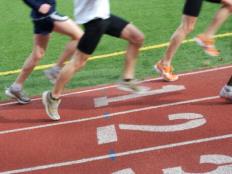
Whether you're a newbie 5k runner or a hard-core marathoner, the long run is the key to any successful training program.
But knowing when to schedule your long runs, how vigorous to make those runs, and the best way to recover from your training can often confuse the distance runner in the midst of their training.
More: How Strength-Training Can Benefit Your Running
Here are seven running experts sharing their tips to make the most of your long-run training—and how it can help you run your best on race day.
Long-Run Training Tip No.1: Just Get Started
Patrick McCrann
"Don't think about the long run itself; focus instead on simply getting ready for a run. After all, getting ready to run is easy—the concept of running 18 miles isn't. In order to do a run all you need is your shoes, your gear and maybe a watch. Done.
"By breaking the longer run down into "just another run," you are effectively removing the mental obstacle 18 miles. And once you get your momentum going it will be much easier to carry that outside the door."
More: Long-Run Training Tips From Patrick McCrann
Long-Run Training Tip No.2: Shorten Your Long Runs
Ed Eyestone
"If you're gunning for a faster 5K, your long run will likely last an hour; marathoners should build up to three hours. Run longer than that, and the physiological gains are outweighed by the stress put on your body.
"I believe that anything over three hours should be saved for race day—if you've consistently run at the proper pace for two to three hours, and tapered adequately, you'll safely complete 26.2 on race day.
Over six consecutive weeks, stair-step your long run as follows: two hours, two and a half hours, three hours, two hours, two and a half hours, and three hours. Taper the run down for three weeks before marathon day. Your effort increases as you run up a hill, even if you reduce your pace.
More: Long-Run Training Tips From Ed Eyestone
Long-Run Training Tip No.3: Sugar is Not Your Friend
Jenny Hadfield
"Sports drinks and other on-the-run fueling products such as gels, beans and Clif Shot Bloks were originally invented to supplement your energy intake. Your body can only take in so much energy in the form of sugar, and when you exceed that level, it causes nauseau and stomach upset. The idea is not to replace the energy lost while running but to only replenish some of what is lost.
"If you are on the lighter side, lean toward the lower end of the range and vice versa. Practice this in training to identify which products agree with your system. Avoid mixing a sports drink with a gel or beans, as all of these products are designed at about a 6 to 7 percent sugar concentration to allow for quick absorption rates.
"If you mix sports drinks with a gel, this increases that concentration level and you'll develop sugar belly. You can also develop this condition if you take in too much sugar during the run. Keep track along the way, and you'll develop a recipe that works for you."
- 1
- of
- 2
About the Author

Get ACTIVE on the Go


Couch to 5K®
The best way to get new runners off the couch and across the finish line of their first 5K.
Available for iOS | Android







Discuss This Article